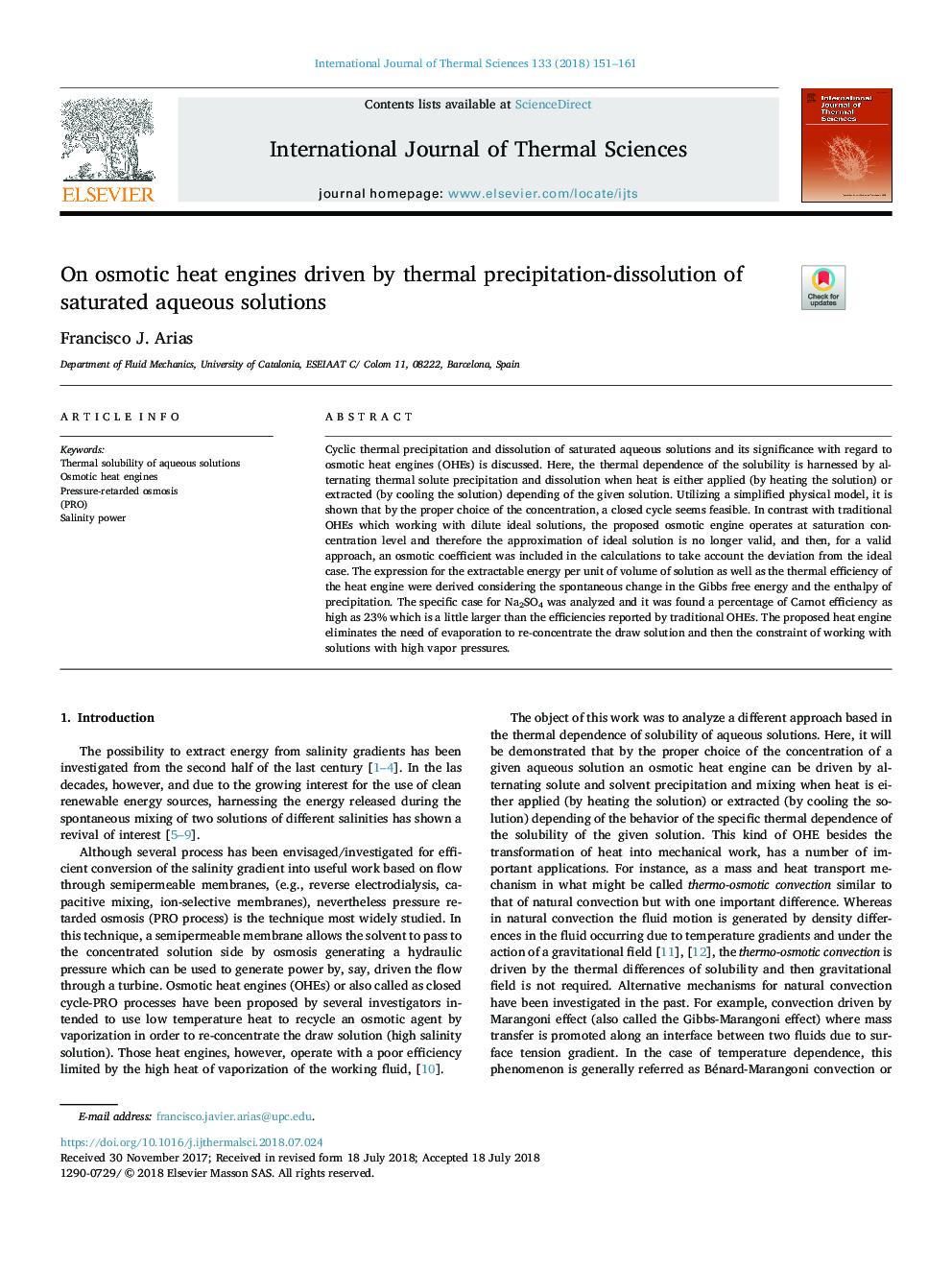| Article ID | Journal | Published Year | Pages | File Type |
|---|---|---|---|---|
| 7060542 | International Journal of Thermal Sciences | 2018 | 11 Pages |
Abstract
Cyclic thermal precipitation and dissolution of saturated aqueous solutions and its significance with regard to osmotic heat engines (OHEs) is discussed. Here, the thermal dependence of the solubility is harnessed by alternating thermal solute precipitation and dissolution when heat is either applied (by heating the solution) or extracted (by cooling the solution) depending of the given solution. Utilizing a simplified physical model, it is shown that by the proper choice of the concentration, a closed cycle seems feasible. In contrast with traditional OHEs which working with dilute ideal solutions, the proposed osmotic engine operates at saturation concentration level and therefore the approximation of ideal solution is no longer valid, and then, for a valid approach, an osmotic coefficient was included in the calculations to take account the deviation from the ideal case. The expression for the extractable energy per unit of volume of solution as well as the thermal efficiency of the heat engine were derived considering the spontaneous change in the Gibbs free energy and the enthalpy of precipitation. The specific case for Na2SO4 was analyzed and it was found a percentage of Carnot efficiency as high as 23% which is a little larger than the efficiencies reported by traditional OHEs. The proposed heat engine eliminates the need of evaporation to re-concentrate the draw solution and then the constraint of working with solutions with high vapor pressures.
Related Topics
Physical Sciences and Engineering
Chemical Engineering
Fluid Flow and Transfer Processes
Authors
Francisco J. Arias,
